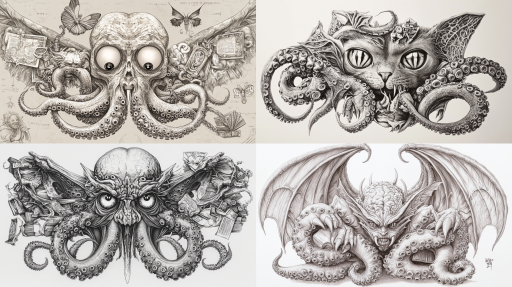Explore the Best AI Image Gallery

AI-Driven Visual Experiences: Crafting the Future of Creativity
The evolution of artificial intelligence (AI) has brought about significant transformations in many industries, and the creative sector is no exception. AI-driven visual experiences have fostered a new wave of innovation, allowing artists, designers, and creators to expand their horizons and push the boundaries of traditional art forms.
Redefining the Creative Process
AI is no longer just a tool; it is becoming a powerful collaborator in the creative process. Utilizing algorithms and machine learning, AI systems can analyze vast amounts of data, recognize patterns, and generate visually stunning content. For example, programs like DALL-E and Midjourney enable users to create unique images based on textual descriptions, offering endless possibilities for artistic expression.
Additionally, AI can assist artists in the early stages of creation by providing inspiration through generative design. Artists can input parameters, and the AI will generate a multitude of design options, acting as a source of creativity from which artists can draw. This synergy between human creativity and AI capabilities marks a significant shift in how art is conceptualized and produced.
The Impact on Various Creative Industries
Across industries such as fashion, gaming, and advertising, AI-driven visual experiences are making waves. Designers in the fashion industry are using AI to predict trends and generate design ideas, significantly shortening the design cycle. Brands like Stitch Fix leverage AI algorithms to curate personalized fashion recommendations for customers, enhancing the shopping experience.
In gaming, AI-driven graphics and character design are creating more immersive experiences. Games are now capable of generating live graphics based on player interactions, which provides a dynamic and engaging gaming experience that could redefine storytelling in video games.
Furthermore, in the realm of advertising, AI is streamlining the content creation process. Advertisements can now be personalized at scale, creating tailored messages that resonate better with individual users. This can lead to more effective marketing campaigns and higher conversion rates.
Ethical Considerations
With the rise of AI in visual creativity, ethical concerns inevitably arise. Questions surrounding authorship and ownership are at the forefront of the discussion. Who owns an artwork generated by an AI? Is it the developer of the AI, the user providing input, or something else altogether? These questions must be addressed as AI becomes more integrated into creative processes.
Additionally, there are concerns about cultural appropriation. AI systems are trained on existing datasets, which may contain biased or misrepresented cultural references. As such, artists and developers must remain conscious of these issues and strive to create AI systems that are respectful and inclusive.
The Future of AI-Driven Visual Experiences
Looking ahead, the future of AI-driven visual experiences appears to be bright. As technology advances, we can expect increasingly sophisticated AI tools that enhance rather than replace human creativity. For instance, augmented reality (AR) and virtual reality (VR) combined with AI could provide new ways for audiences to experience art. Imagine walking through a gallery where AI creates personalized experiences or adjusts artworks based on the viewer's reaction. The potential applications are limitless.
Moreover, as AI systems become more advanced, the ability to create realistic simulations will improve, allowing designers to prototype and iterate rapidly. This could change the entire design landscape, leading to innovative approaches in product design, entertainment, and more.
Conclusion
AI-driven visual experiences are not just a trend; they symbolize a transformative era in creativity. By reshaping how ideas are generated and expressed, AI is paving the way for new forms of collaboration between technology and human creativity. As we continue to navigate this changing landscape, it’s crucial to address the ethical considerations and harness this technology responsibly. The future of creativity is undoubtedly intertwined with AI, offering exciting possibilities for artists and audiences alike.




](https://images.ai-img.art/thumbnails/150/f67d9af3398150f2ab1bcf250717fea134275e2ca896252b54a4d9bb3719f9ac.webp)

](https://images.ai-img.art/thumbnails/150/bddf3ae4a232290858389b933c866ad3be429ef2e25c23a9f4d7713ed6e44d0b.webp)







](https://images.ai-img.art/thumbnails/150/c2c9c48b38fae37f0a457b80b084ed01ba803810fc8f488c8f610c03abc74049.webp)


](https://images.ai-img.art/thumbnails/150/4289d1230b86a96c4d556636c3167bed0ef38f850826549517e4e45db4d87bf7.webp)



](https://images.ai-img.art/thumbnails/150/008b5d5d49667cc2e93a5f8a8adfaa545963da99c39ff0901f5296294636400d.webp)












](https://images.ai-img.art/thumbnails/150/f9584153b4cddd8c9fab611dc10247549b275c59bc173251e37d0935874f9deb.webp)






